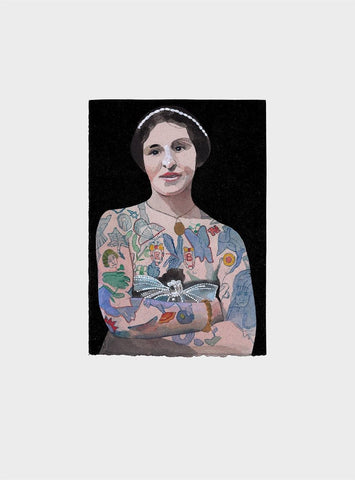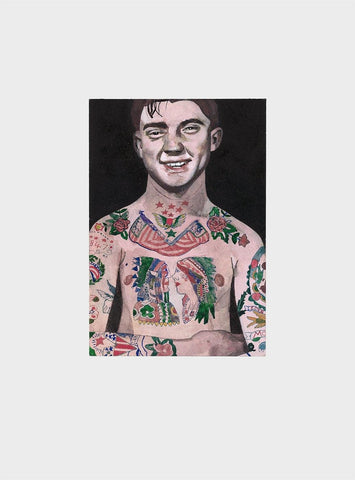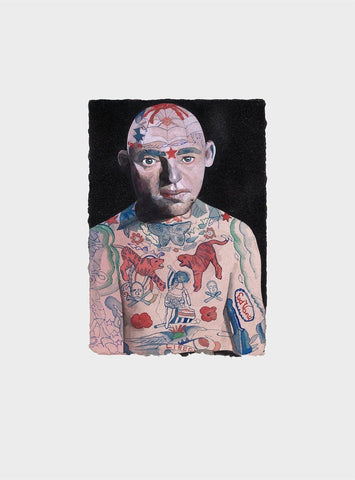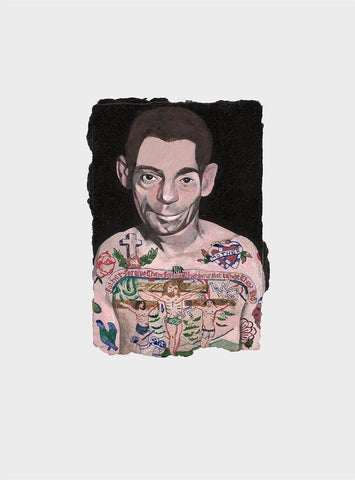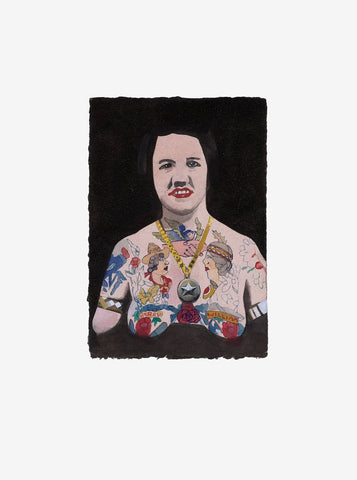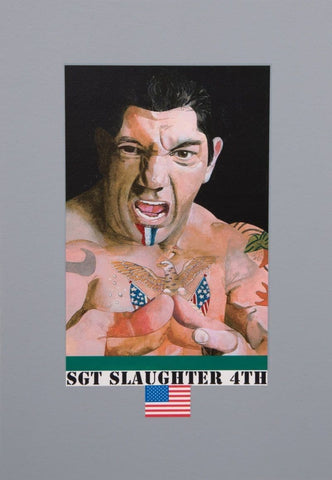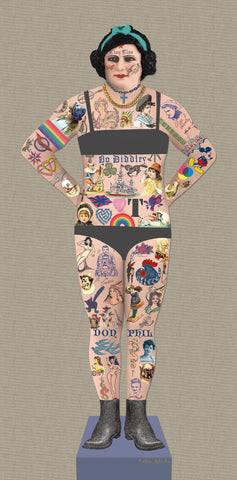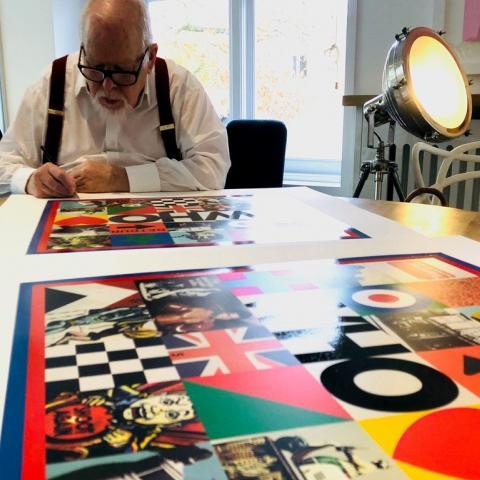Sir Peter Blake’s Tattooed People are some of the most admired pieces we have at Enter Gallery. The enduringly-popular series defines the Godfather of Pop Art’s oeuvre, displaying the career-long captivation with the circus side-show that has inspired so much of his work.
These Tattooed People are a great investment, and as defining works from Blake, they make the perfect addition to any art collection. Back in 2010, one of Blake’s artworks of a tattooed person - Loelia, The World’s Most Tattooed Lady - sold for £337,250 at Sotheby’s.
Given how iconic this series is, we’re absolutely delighted to have secured all the remaining pieces within the collection, and they are available at Enter Gallery now.
To explain what makes the Tattooed People series so special, today we’re diving a little deeper into the fascinating history of tattooed people to learn more about the art form that captured Blake’s imagination.
The History of Tattoos
Tattoo origins are linked to Polynesian culture, where people would get tattooed with sharpened bone in a long and painful process that was considered a sacred rite of passage.
Tattoos are also linked to Ancient Egyptian culture, with some mummies discovered with tattoos on their skins. Most of those with tattoos were women, which historians suggest implies Egyptians believed tattoos would offer protection during childbirth.
It wasn’t until the 19th century that tattoos made their way to the western world, when sailors returned home with tattoos to accompany the stories they had to tell about their explorations of the world.
One expedition was so intrigued by the primitive tradition of tattooing they witnessed in the Tahitian islands that they brought one of the guides to England with them and introduced him to the King. This visit caused quite the stir amongst the upper class, and in no time, a new trend was born.
Tattoo Tea Parties
Rumour has it that when Queen Victoria wasn’t plotting world domination, she relaxed by getting inked. While it’s never been proven, some claim the monarch had a tattoo of a python and a tiger on her arm. If this is true, it’s likely this happened at one of the so-called ‘tattoo tea parties’ that were all the rage amongst Victorian high society.
After Samuel O’Reilly created a machine that made tattooing faster and less painful, everyone who was anyone in high society wanted to be tattooed. One historian reveals:
“To Europeans, tattoos were scandalous and exotic. In Victorian England, it became a secret fad amongst the aristocracy. People would be inked in easily-covered locations so as to ride the edge of risqué behaviour.”
These tattoo tea parties became the hot ticket, with rich men and women across Victorian England gathering to have tattoos done by master artists, with only the most fashion-forward brave enough to go under the needle.
Double Standards
Amongst upper class men, tattoos were considered a status symbol that implied you’d travelled places and seen things. For women, tattoos were considered a fashionable feminist gesture of reclaiming their bodies. Unsurprisingly, amongst the working classes, opinion of those with tattoos was decidedly less positive…
While the upper classes applauded each other for going under the needle over cucumber sandwiches, working class men with tattoos were instantly written off as criminals and members of street gangs, and for working class women, a tattoo was a sure fire sign of sexual promiscuity.
Interestingly, Blake’s original inspiration for his Tattooed People series came from a collection of prison mugshots featuring tattooed people.
Tattooed Women
While some shunned the art form for its negative connotations, others cared little for opinion and saw tattoos as an excellent business opportunity.
Given the fascination with tattoos at the time, people were willing to part with their cash just for the opportunity to eyeball tattooed people. Working class women in particular were quick to capitalise, opting to get heavily-tattooed so that they could become a star attraction at the circuses and side-shows that would later inspire Blake.

These women were way ahead of their time, transgressing Victorian gender norms by showing off their tattooed bodies in very little clothing, while taking home far more money than their male counterparts.
Back then, small tattoos were cheap as chips, and the earnings for having them were considerable. Depending on their popularity, some women averaged £160 a week in the early 1900s, where as teachers back then were earning just £5 a week!
A Lifelong Obsession
Given the fascinating history and the art form’s links to his beloved circus, it’s no wonder the world of tattoos holds so much creative allure to Peter Blake. He has always been candid about his love of Brighton and the special place it holds in his heart, and has stated that one of the reasons he loves our city is seeing how many people here display their tattoos with pride.
This Tattooed People series of watercolours depicts a made-up cast of characters, with individual body art designed to show off their different personalities.
Each painting effectively features two canvases, the one that Blake paints on, and each of the characters’ skin. In Doris, Blake etches the names of Prince William and Prince Harry on her breasts, and in Ron, he covers his subjects’ face with a mask of tattoos reminiscent of Billy Rainbow from his coveted 1972 series, The Wrestlers.
Eagled-eyed Blake fans will notice that characters from Blake’s Wrestlers series, are also densely-tattooed, which links these two collections together nicely.
As well as reflecting Blake’s passion for the circus, the Tattooed People series is reminiscent of similar popular works, including Tiny Tina the Tattooed Lady and Tattooed Ladies.
View Sir Peter Blake’s Tattooed People series here.

